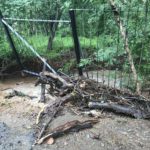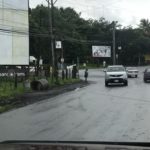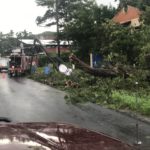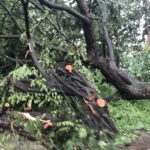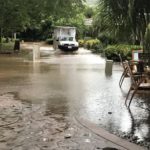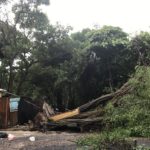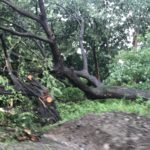Is this the rainy season or a tropical storm?
I was inspired to write this blog about the seasons in Costa Rica by Tropical Depression 16 turned Tropical Storm Nate turned Hurricane Nate (but not before leaving Costa Rica to Nicaragua, Honduras and who knows where next?). It’s been raining here for almost three days straight but it’s subsiding. While we have power now in Brasilito, most of our friends in Potrero, Mar Vista, Playa Grande and Tamarindo still are without – and have been for more than 48 hours.
As it down poured the morning of Wednesday October 4, 2017, we figured it was just more of the typical rain we saw throughout August and September but that it would subside in time for our beach adventure we planned for that afternoon with several other families. But we quickly learned by about 10:00 am when we got the email to come get the kids from school because they were evacuating early. This was an early release day already so to tell parents to come at 10:00 versus waiting for 11:30 when they’d have been released anyway, it was pretty clear this wasn’t your typical Costa Rica rain storm. Later we were told the country was on Red Alert for the tropical storm that was ensuing.
We now know that this level of storm hasn’t hit Costa Rica in what many estimate to be 20 years. One Tico told us that there was more rainfall reported in the first day of the October storm than all of September. This is particularly problematic because September had already 25-50% heavier rainfall than average.
Three days later and the aftermath (see pics below) is still pretty intense but at least many of the homes and businesses are out of the ground water now.
Outside of Tropical Storm Nate, though, there are still questions.
Since we’ve moved here several friends have asked if our seasons are reversed similar to Australia or other countries in the Southern hemisphere. It’s a common question but it isn’t a simple yes or no answer so it requires a little clarification. First things first:
Costa Rica is in the Northern Hemisphere

Because Costa Rica is actually in the Northern Hemisphere, it would not have opposite seasons as the US. And don’t expect the water in the toilet to swirl any differently either. To help you get your bearings, I’ve embedded this handy map showing where we are (balloon with A) and where the equator is (dotted line).
Costa Rica has Just Two Seasons
Even though we’re still in the Northern Hemisphere, we don’t have the same four seasons in Costa Rica as the United States and other countries north of the equator. In fact, Costa Rica has just two seasons: First is the rainy season from May – November that is also called the green season. Second is the dry season that spans December to April. This season is also called the high season given the dramatic increase in tourism. Even that isn’t as simple as it gets. Much like the US where the weather and climate change depending on the location, there are variances in Costa Rica weather across the country as well. We live in the Guanacaste Province on the North Pacific Coast where the country is known for beautiful beaches, amazing surfing and tropical dry forests.
So when is the best time to visit Costa Rica?
We get asked this, along with many other common questions, about visiting Costa Rica. We have several friends coming to visit us throughout our year in Costa Rica and all plan to come in the high season. This is likely less about the weather here than the weather in Idaho where we are from. Most people enjoy the fall leading into winter there because it’s mild and the colors are beautiful. After the holidays though, residents tend to want to want a glimpse of summer and head south for some therapeutic fun in the sun.
But if you’re planning a visit to Costa Rica – or thinking you want to live here for a few months – I would highly recommend the green season – for that reason. It is green! Sure it rains on a daily basis but rarely does it last all day and when the rain does come each day it often comes in the afternoon when you’re ready for a break from the heat and the sunsets and thunder storms the rains bring are an attraction in themselves. Guanacaste in particular is a great place during the rainy season because of the tendency to be dry most of the day with afternoon dumps.
Also, did I mention the dramatic increase in tourist from December to April? Aside from the sheer number of people and lines, the cost of everything goes way up. So, if it’s an option, I recommend a “fall” visit to the rainy season and save yourself the headache and cost and truly enjoy what pura vida has to offer!
Regardless of season, while you’re here, check out some of our favorite restaurants and adventures in Costa Rica.

